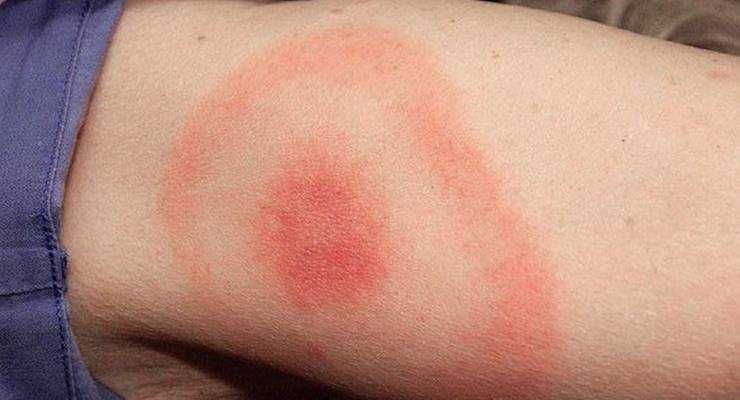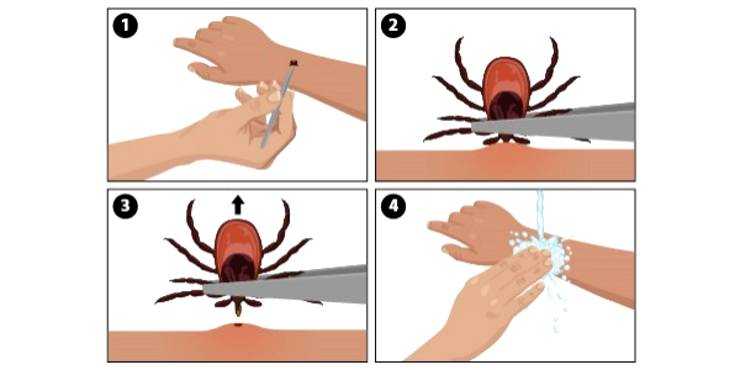Lyme Disease: Cause, Symptoms, Treatments and other Remedies

Chronic pain, organ damage, and restlessness are often reported by individuals living with the long-term effects of Post-Treatment Lyme Disease Syndrome. Many of these individuals also struggle with chronic insomnia and fatigue as a result of Lyme Disease.
Let’s take a look at what Lyme Disease is, its symptoms, and how to treat Lyme-related fatigue.
- https://www.cdc.gov/lyme/index.html
- https://www.healthline.com/health/lyme-disease#treatment
- https://www.ncbi.nlm.nih.gov/pmc/articles/PMC2440571/
- https://www.lymedisease.org/types-of-ticks/
- https://www.cdc.gov/lyme/datasurveillance/index.html
- https://www.lymedisease.org/lyme-basics/ticks/tick-removal/
- https://www.cdc.gov/lyme/prev/index.html
- https://www.healthline.com/health/lyme-disease#lyme-disease
- https://www.healthline.com/health/lyme-disease-natural-treatment
What is Lyme Disease?
Lyme disease is an infection caused by the bacteria Borrelia Burgdorferi and is transmitted to humans from a tick bite.
The infected tick has to stay latched on to the skin for 24-36 hours for the bacteria to transfer from the tick to the human host.
It may seem like having a tick latched on for that length of time would be unlikely, however, the ticks that carry Lyme Disease are often as tiny as a pinhead.
Many people do not even realize that they have been bitten until a rash appears later. Symptoms of Lyme can also take up to a month to appear, making the disease even more difficult to detect.
Early Symptoms of Lyme Disease
There are some tell-tale signs that Borrelia Burgdorferi has invaded the body via a tick bite. Noticing these signs may be an early indicator that the bacteria which causes Lyme Disease is present in the body. If an individual is experiencing any of these symptoms, a medical professional should be consulted immediately.
Rash

A circular rash around a red bump is considered a classic sign of Lyme. It is often referred to as a “bull’s eye rash” because the way the rash radiates from the bite mark resembles a bull’s eye target.
The bull’s eye Lyme rash can have a 12-inch radius and is often warm to the touch, but it’s not usually itchy or painful.
Another problem that makes Lyme symptoms hard to detect is that tick bites and the rash that follows may not be in a place that is easy to notice, such as the scalp or back of the body.
Fever
If a rash or bite mark is accompanied by any kind of fever - high or low-grade - it may be an early sign of the dreaded Lyme Disease.
Fatigue or Body Aches
If a rash or bite mark is accompanied by unusual fatigue, body aches, and joint pain or swelling, it could also be an early symptom of Lyme Disease
Why Ticks Carry Lyme Disease?
Ticks are tiny, blood-sucking crawling bugs related to spiders. There are hundreds of types of ticks in the world and some of them can carry a variety of bacteria.
The good news is that not all ticks carry the Borrelia Burgdorferi bacteria that causes Lyme. Usually, the Lyme-carrying culprits in the U.S. are the deer tick (Northeast U.S.), the black-legged tick (western U.S.), and the lone star tick (Southern U.S.).
Also, many people suspect that the number of cases in the south and west and under-reported and that there are much more active cases of Lyme in these regions.
All ticks have four life stages - egg, larva, nymph, and adult - and after hatching each stage they latch on to animals such as mice, squirrels, or deer.
Many of these animals may carry the Lyme disease bacteria and pass it onto the tick. If the tick then bites a person, it can infect the individual with Lyme Disease.
Usually, ticks are present wherever animals live, because they primarily bite and latch onto animals. So, if someone goes on a hike in a grassy or wooded area or even has a pet that goes outside occasionally, it is possible to have a tick latch on without them even realizing it.
Tick Removal

- Don’t squish or squeeze. This only increases the likelihood of leaving part of the tick burrowed in the skin.
- Use tweezers. Make sure to get as close to the skin as possible Use tweezers to get a good grip on the tick, then pull it out of the skin steadily, without twisting or squeezing so hard that the body is severed.
- Discard or save. If the tick may have been latched on for more than 24 hours, it may be a good idea to place the tick in a ziplock baggie and make sure it is sealed completely. If symptoms of Lyme are developed later, this can be helpful in diagnosing. If the tick is not a Lyme-carrying type or if it has certainly been latched on less than 24 hours kill the tick by popping off the head and discarding it.
- Wash/Disinfect. Once the tick is removed, be sure to wash the site of the bite with soap and warm water and then wash your hands.
Lyme Disease Prevention
We have probably all heard the adage, “An ounce of prevention is worth a pound of cure.” This is certainly true when it comes to Lyme Disease. The best way to combat this messy illness is to take appropriate precautions in the first place.
- Wear insect repellent. It is important to wear insect repellent on clothing and exposed skin any time someone is in a wooded or grassy area. Hiking, camping, or even sitting outside can provide a good opportunity for an infected tick to bite.
- Check for ticks regularly. Check for ticks thoroughly after every outdoor excursion. It is important to check the scalp, back, and the back of the legs for evidence of bite marks.
- Check pets for ticks. Perhaps one of the most common ways to contract Lyme is for a tick to travel inside on a pet. Pets that spend any time outdoors should be checked for ticks often. Try using a good tick medicine or bath for pets periodically to cut down on the risk of Lyme through tick transmission.
- Beef up the immune system. Ideally, if an individual’s immune system is in tip-top shape, the body can detect and defeat the Lyme causing bacteria Borrelia Burgdorferi before it has a chance to cause any problems. Some ways to develop a healthy immune system include a healthy diet, plenty of exercise, vitamin supplements, and getting good sleep.
- Probiotics can also promote good gut health that encourages a good immune system and appropriate reactions to bad bacteria that enter the body.
Long Term Effects of Lyme Disease
Because Lyme is often difficult to diagnose (remember, many individuals do not even realize they have been bitten by a tick), it often goes untreated and can cause multiple health problems down the road.
Given how difficult it can be to diagnose PTLDS and the length of time it often takes for someone to receive an accurate diagnosis, many suspect that much more individuals are afflicted with Lyme Disease than the current numbers reflect.
Some individuals have been misdiagnosed with fibromyalgia or other immune disorders only to have their diagnosis later confirmed to be Lyme Disease.
Symptoms of PTLDS can include joint swelling or pain and muscle pain, fogginess or short-term memory loss, damage to the heart or nervous system, anxiety, and insomnia.
Pain, swelling, and fatigue are often so severe that it can be misdiagnosed as fibromyalgia. Swollen knees, burning feet, and tingling hands are other mystery symptoms that often plague individuals for months or years before an appropriate diagnosis.
Because Lyme Disease is caused by a bacteria that is wreaking havoc on the body, it can invade organs and the nervous system, causing heart damage, kidney damage and nerve damage.
Some symptoms of nerve damage can involve parietal paralysis of a limb or partial facial palsy. While Lyme Disease itself is not fatal, the long-lasting effects of Post-Treatment Lyme Disease Syndrome can cause permanent damage.
Many individuals with Lyme also report restless sleep and insomnia from their Lyme disease. This may be partially caused by Lyme’s impact on the nervous system or the anxiety that often accompanies invisible illnesses.
An Invisible Disease
Much like fibromyalgia and other auto-immune disorders, living with PTLDS can have a negative impact mentally and emotionally on those who suffer from the disease, especially those who are still waiting on an accurate diagnosis.
Chronic pain and fatigue along with mysterious swelling, mood swings, anxiety, and insomnia are often attributed to hypochondria by peers and even some within the medical community.
Of course, Lyme Disease is real and detectable, but as we have discussed, it is often undiagnosed for months or years. This means many individuals are left dealing with the emotional ramifications of living with an invisible disease.
The emotional component of living with a disease without a name or having people respond to symptoms with comments such as, “But you don’t look sick” may cause new or worsening depression or anxiety, as well as anxiety-related insomnia.
Treatments for Lyme Disease
Antibiotics
Supplements and Natural Treatments
Unfortunately, antibiotics are not usually used to treat Chronic Lyme or PTLDS. By the time the Borrelia Burgdorferi bacteria has been present in the body for a length of time, the immune system is suppressed and some damage may have already been done. Some individuals have found success with supplements (like vitamins, fish oil, magnesium, etc) that strengthens the body’s immune system and natural treatments.
Weighted blankets
As we have discussed, restless sleep and insomnia are often symptoms of Chronic Lyme Disease. Using a weighted blanket at night may be a good way to treat sleep problems related to Lyme.
Conclusion
While Lyme Disease is treatable when caught early enough, the long-term effects of Chronic Lyme Disease, or PTLDS, can be debilitating.
Along with the physical ramifications which often include pain, swelling, and organ damage, the emotional effects of living with an invisible disease only further complicate the condition.
Because insomnia and restlessness are common symptoms of PTLDS, weighted blankets may be a good treatment option for many individuals afflicted with this condition.
Using the right weighted blanket may reduce anxiety and promote good sleep patterns for those with Chronic Lyme Disease and help improve their overall quality of life. Try using a weighted blanket to combat insomnia and restlessness related to Lyme Disease.
